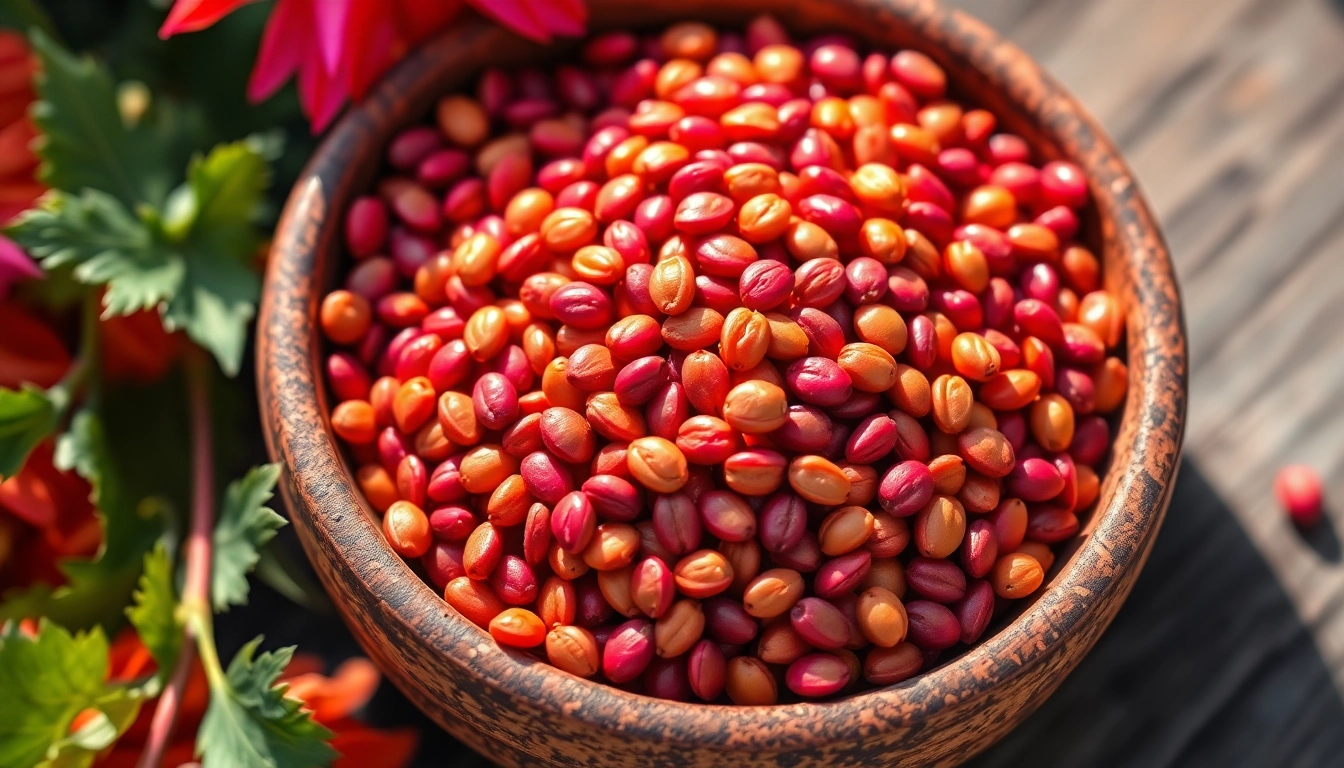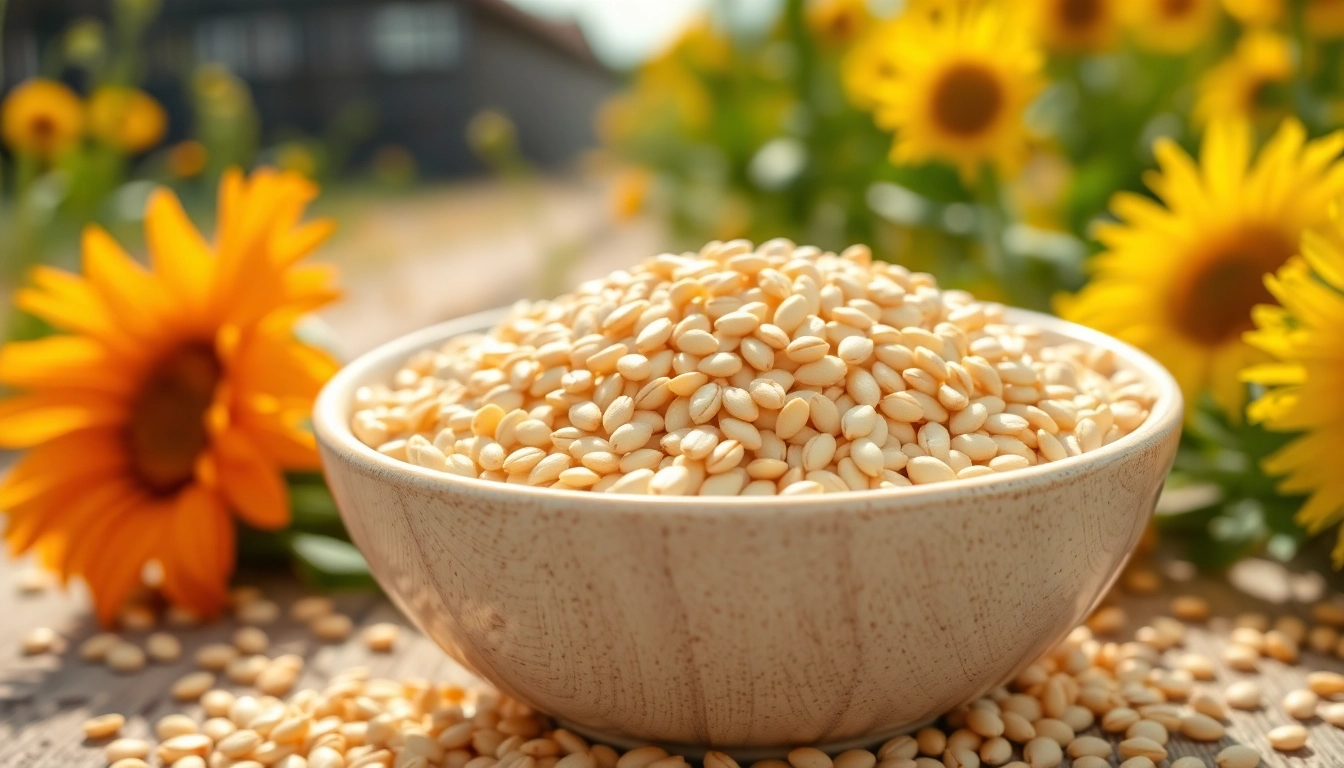Introduction to Safflower Seeds: Benefits and Applications
Safflower seeds are a versatile and nutritious commodity that has garnered increasing attention within the global health, culinary, and industrial sectors. Known for their rich fatty acid profile and numerous health benefits, safflower seeds serve as an important source for oil extraction, culinary use, and health supplements. As a prominent manufacturer and exporter of high-quality food ingredients, Safflower Seeds from reputed companies like SpiceNest are trusted for their purity, certification, and adherence to international standards. This article provides an in-depth overview of safflower seeds, exploring their nutritional benefits, common applications, market trends, and essential considerations for quality and processing, aimed at helping traders, processors, and consumers understand this valuable product comprehensively.
Understanding the Nutritional Value of Safflower Seeds
Safflower seeds are packed with essential nutrients that contribute to their growing popularity in health-conscious diets worldwide. These seeds are an excellent source of polyunsaturated fatty acids, especially linoleic acid, which plays a crucial role in maintaining cardiovascular health by reducing bad cholesterol levels. They also contain significant amounts of vitamin E, a potent antioxidant that supports skin health and immune function. Additionally, safflower seeds provide dietary fiber, plant-based protein, and minor quantities of vitamins and minerals such as magnesium and phosphorus.
Research indicates that safflower seed oil, extracted from these seeds, is rich in unsaturated fats, making it an ideal choice for cooking oils that aim to promote heart health. The high antioxidant content further enhances its benefits by neutralizing free radicals, potentially reducing the risk of chronic diseases. Considering the evolving understanding of nutrition, safflower seeds are increasingly incorporated into functional foods, dietary supplements, and health products.
Common Uses in Cooking and Oil Extraction
The primary industrial application of safflower seeds is oil extraction, which yields safflower oil widely used in cooking, frying, and salad dressings. Due to its light flavor and high smoke point, safflower oil is favored in culinary applications across various cuisines globally. Many food manufacturers and restaurants prefer it because of its neutral taste that does not overpower dishes.
In addition to oil extraction, safflower seeds are used in their whole form for snack foods, trail mixes, and bakery products. They can also be processed into meal or flour for baking and extrusion purposes. The seeds’ high oil content makes them a cost-effective raw material for producing refined oils that meet international food safety standards.
Moreover, safflower seed oil is recognized for its therapeutic and cosmetic uses. It is incorporated into skincare products due to its moisturizing properties and high vitamin E content, making it a popular ingredient in massage oils, lotions, and anti-aging formulations.
Market Demand and Trends for Safflower Seeds
The global demand for safflower seeds and oil has witnessed a steady upward trajectory driven by increasing consumer awareness about healthy fats and natural oils. The rise in vegetarian and vegan diets, coupled with the demand for plant-based ingredients, has further bolstered its market growth. Additionally, the organic and non-GMO certification trend is gaining momentum, with consumers seeking products that are sustainably sourced and free from synthetic additives.
In particular, regions such as North America, Europe, and parts of Asia are major consumers, with a growing preference for organic safflower oil in health and wellness products. The agricultural sector is also witnessing innovation in crop genetics and cultivation techniques to improve yield, pest resistance, and nutritional profile, which directly impacts pricing and availability.
Overall, the market trends indicate a robust and sustainable future for safflower seeds, with expanding applications beyond culinary uses to industrial and pharmaceutical sectors. For exporters and manufacturers like SpiceNest, aligning with international quality certifications and participating in global trade exhibitions significantly enhance market reach and credibility.
Choosing the Right Safflower Seeds: Quality and Certification
Factors Affecting Seed Quality
Selecting premium safflower seeds depends on various factors including purity, moisture content, seed size, color, and absence of contaminants such as dirt, stones, or pests. High-quality seeds are free from mold and fungal infections, which can compromise oil quality and shelf life. The seeds should be uniform in size, indicating proper harvesting and processing practices.
Certifications and Standards to Look For
For international trade, obtaining certifications such as ISO, Organic, Non-GMO, and Food Safety Management certifications (like BRC or HACCP) is essential. These standards assure buyers of the product’s safety, quality, and compliance with export requirements. Many reputed manufacturers, including SpiceNest, ensure their safflower seeds meet global standards and possess all necessary certification documentation.
How SpiceNest Ensures Premium Quality
SpiceNest, as a leading manufacturer and exporter, employs rigorous quality control measures, including advanced cleaning, sorting, and testing processes. Their safflower seeds are sourced from trusted farmers, adhering to sustainable and organic cultivation practices, which enhances product integrity. The company’s certifications and presence at major exhibitions affirm their commitment to delivering authentic, high-grade safflower seeds tailored to diverse customer needs.
Processing and Storage of Safflower Seeds
Best Practices for Cleaning and Processing
Effective cleaning involves removing impurities such as dust, husks, and other foreign materials through state-of-the-art sieving, destoning, and optical sorting techniques. Processing methods should preserve the seed’s nutritional integrity, employing minimal heat or chemical treatments. Proper extraction of oil requires cold-press or expeller-press methods to retain maximum nutrients.
Optimal Storage Conditions for Freshness
To maintain quality, safflower seeds must be stored in cool, dry, and well-ventilated environments, away from direct sunlight and moisture. Use of airtight containers or vacuum-sealed packaging helps prevent oxidation and pest infestation. Proper storage ensures freshness, extends shelf life, and preserves oil quality, especially for export.
Packaging Solutions for Export and Retail
Packaging plays a pivotal role in safeguarding safflower seeds during transit and sale. Laminated and food-grade plastic pouches, vacuum packaging, and vacuum-sealed tins are common solutions. For bulk exports, standardized palletized cartons with appropriate desiccants and oxygen absorbers are used. SpiceNest ensures their packaging complies with international standards, promoting product safety and consumer confidence.
Market Strategies for Safflower Seeds Suppliers
Effective B2B Marketing Channels
Building strong relationships with distributors, wholesalers, and processors is crucial. Digital marketing through targeted B2B platforms, dedicated websites, and participation in international trade portals can enhance visibility. Showcasing certifications, quality standards, and testimonials reinforces credibility. Engaging in direct outreach, such as trade delegations and personalized communication, helps facilitate long-term contracts.
Building International Trade Relationships
Attending global trade fairs, like Biofach or Foodex, offers platforms for face-to-face interactions with potential clients. Networking with industry leaders, securing certifications accepted internationally, and providing samples are vital steps. Developing customized solutions, such as organic or non-GMO safflower seeds, tailored to regional preferences, can differentiate your offering.
Leveraging Trade Shows and Exhibitions
Participation in major food and agricultural exhibitions worldwide continuously boosts brand recognition. For example, SpiceNest’s successful showcase at Biofach 2024 demonstrated their commitment to quality and innovation. These events provide opportunities to understand market trends, gain customer feedback, and secure strategic partnerships.
Future Outlook and Innovations in Safflower Seeds Industry
Emerging Uses and Product Development
Innovations include developing high-oleic safflower varieties for stable cooking oils and nutraceutical applications. Extracted components like tocopherols and sterols are increasingly used in functional foods and dietary supplements. Research into genetic enhancement aims to improve oil yield, disease resistance, and environmental adaptability.
Technological Advancements in Processing
Automation and precision agriculture are revolutionizing safflower cultivation and processing. Techniques such as cold-press extraction, supercritical CO2 extraction, and ultrasonic milling improve yield efficiency and preserve bioactives. Blockchain technology is also being adopted for supply chain transparency, ensuring traceability from farm to consumer.
Sustainable Sourcing and Organic Certifications
Relentless focus on sustainability, organic farming, water conservation, and minimal environmental impact is shaping industry standards. Certifications like USDA Organic, EU Organic, and India Organic further enhance market access and consumer trust. Companies like SpiceNest are investing in eco-friendly cultivation and processing to meet global demand for sustainably sourced safflower seeds.



